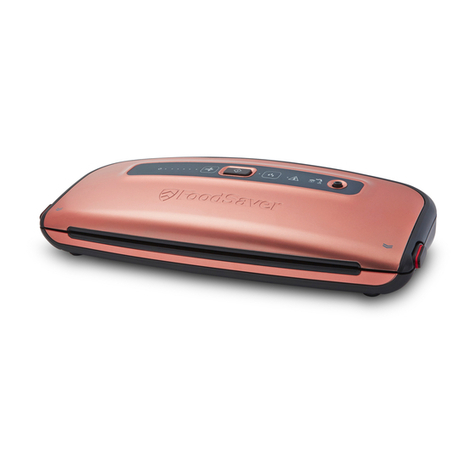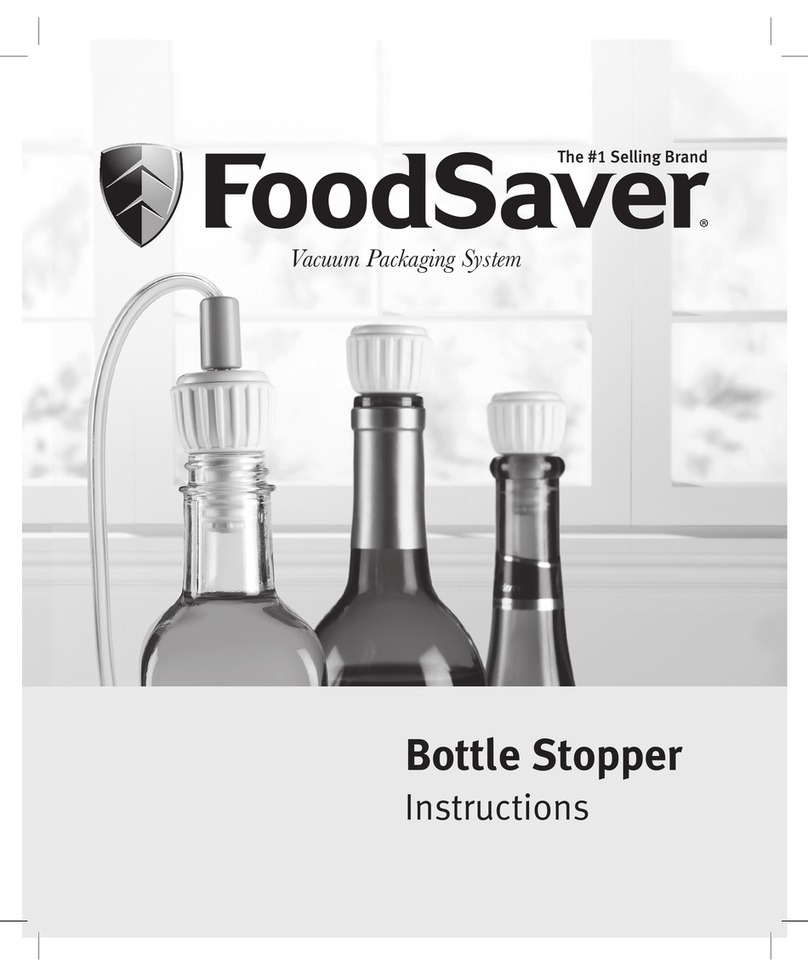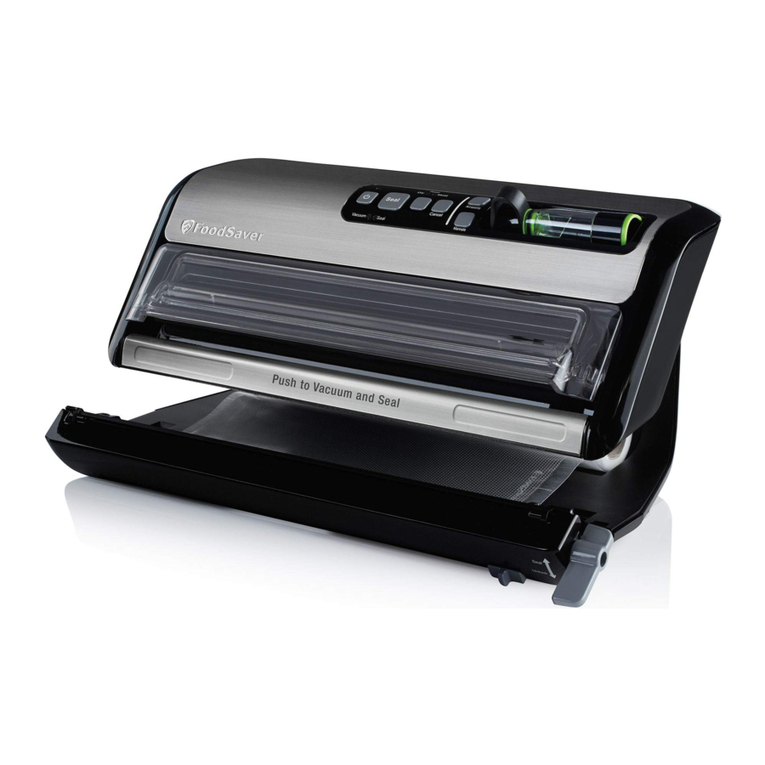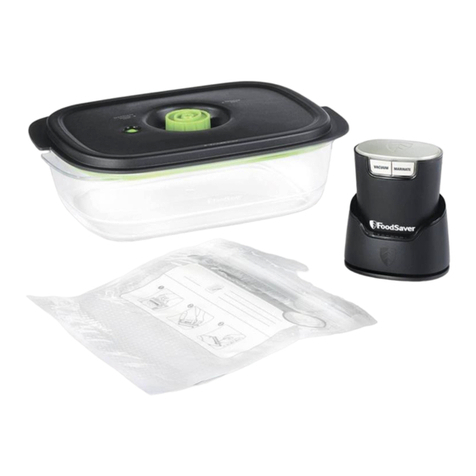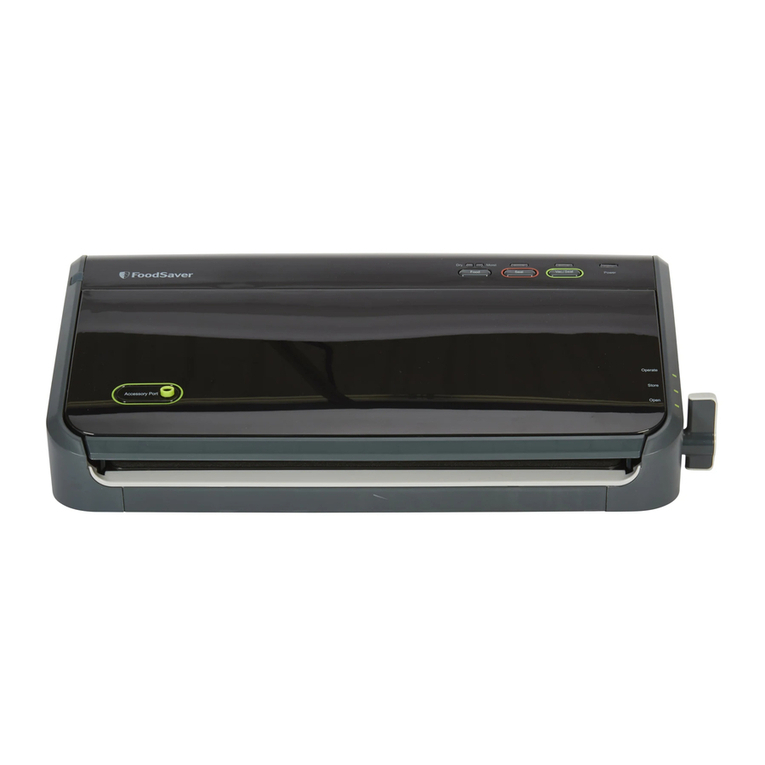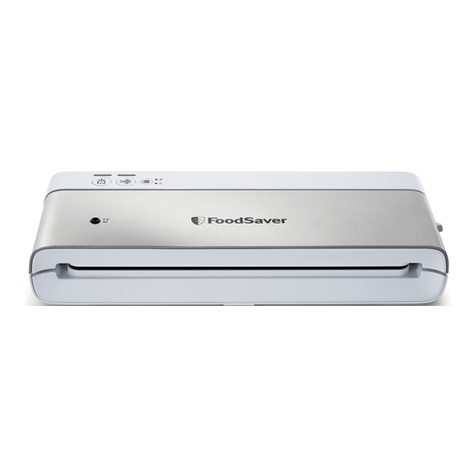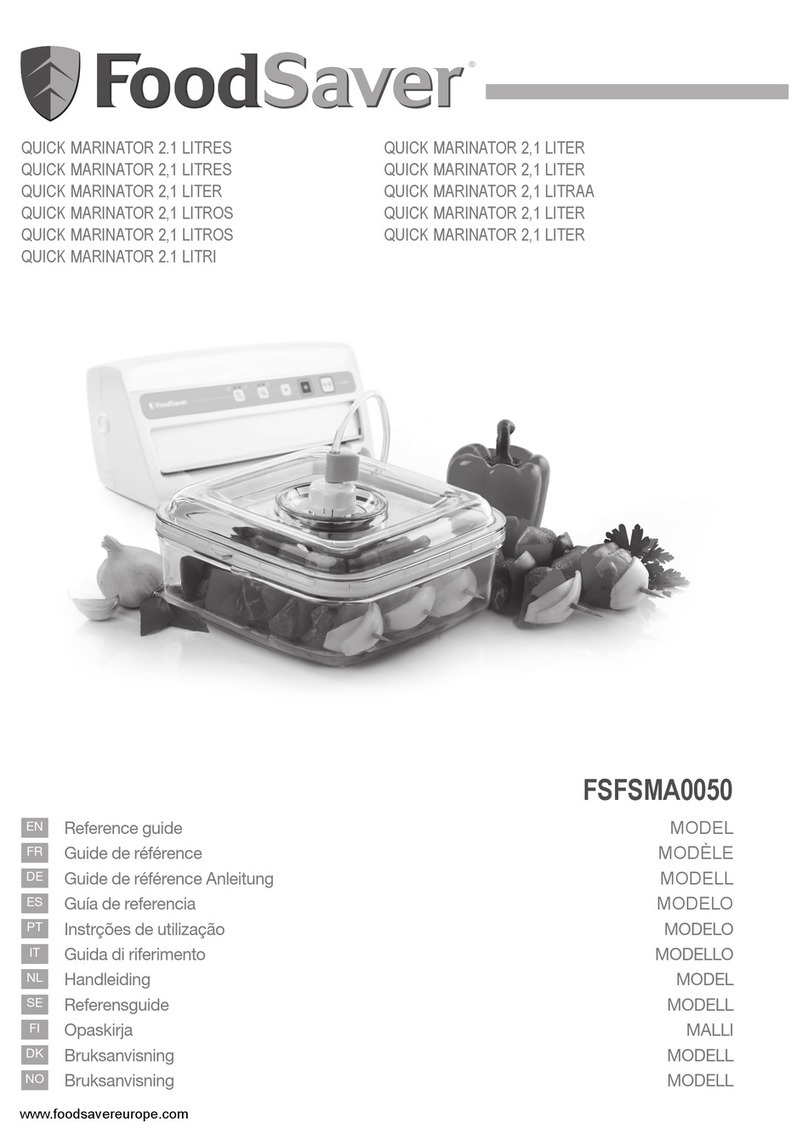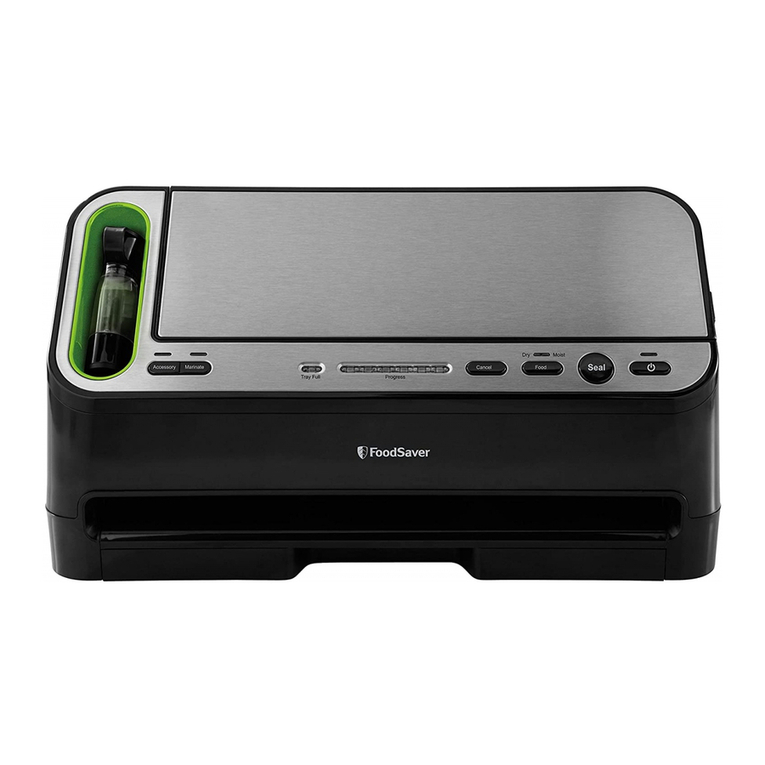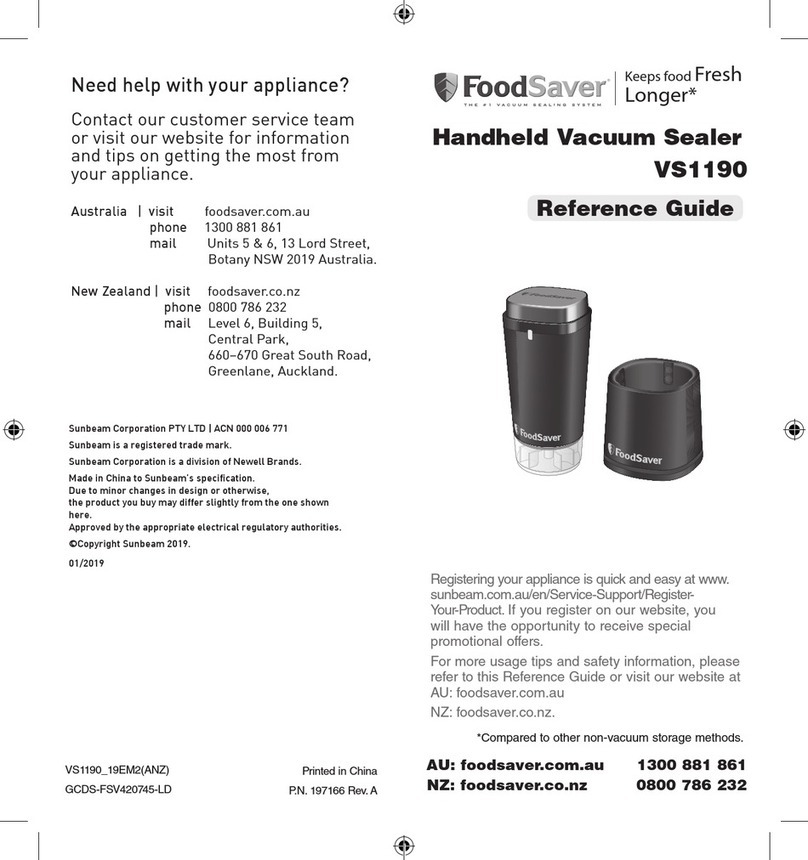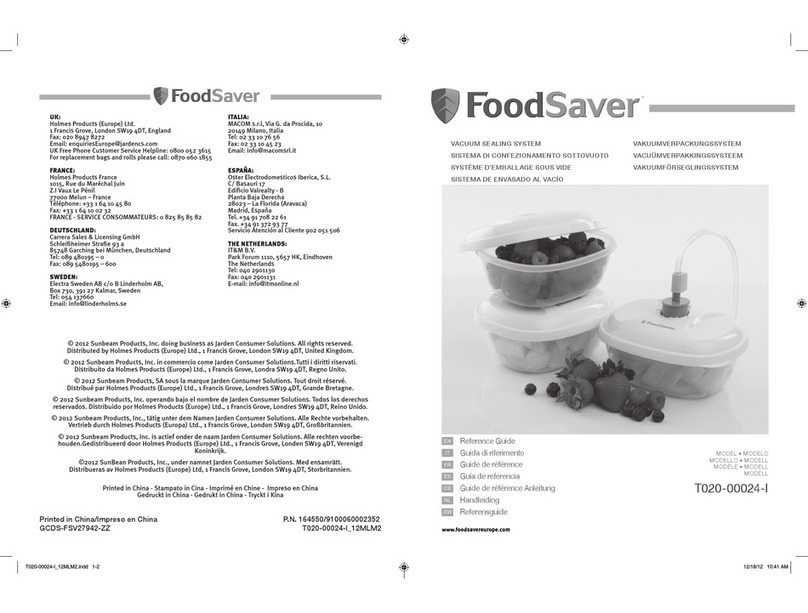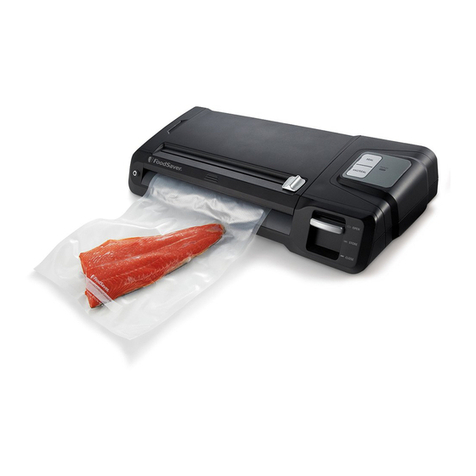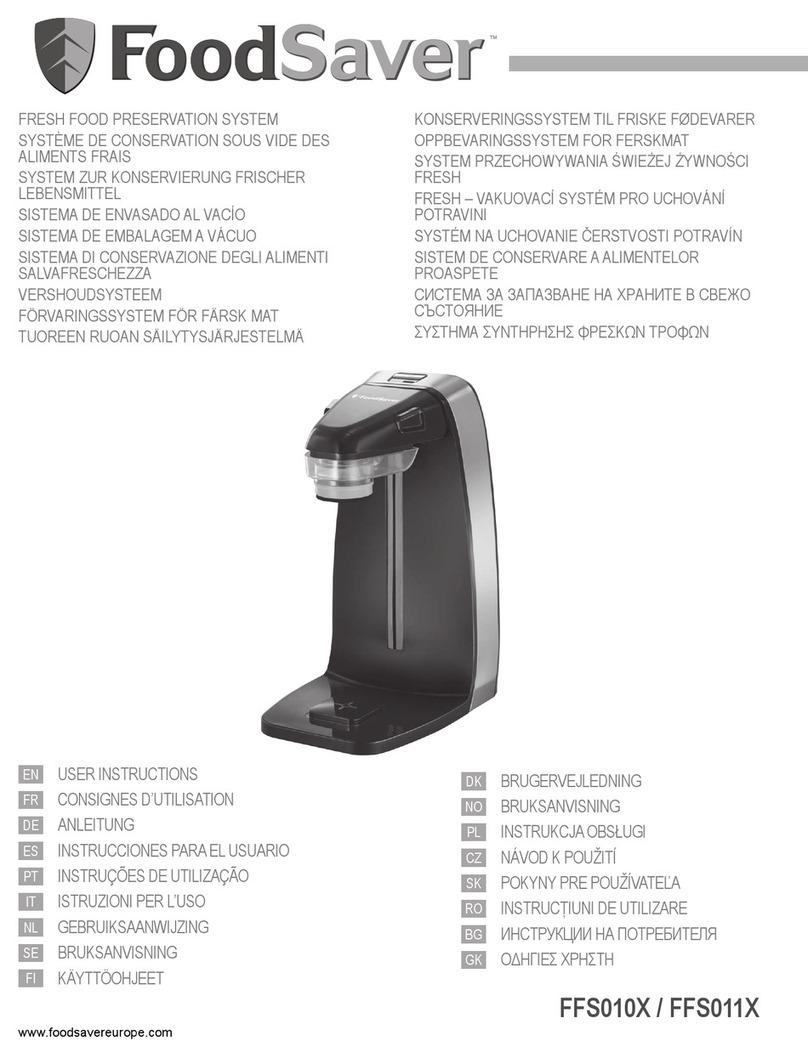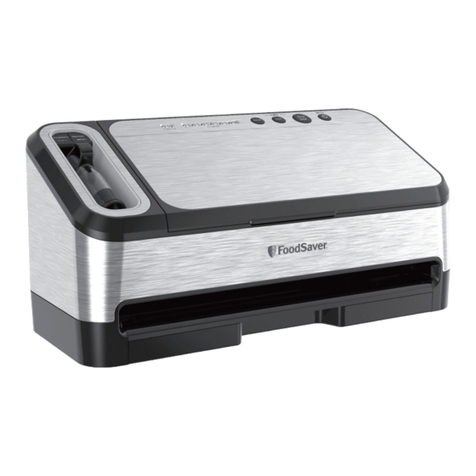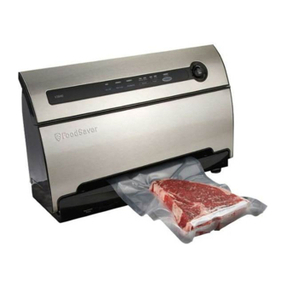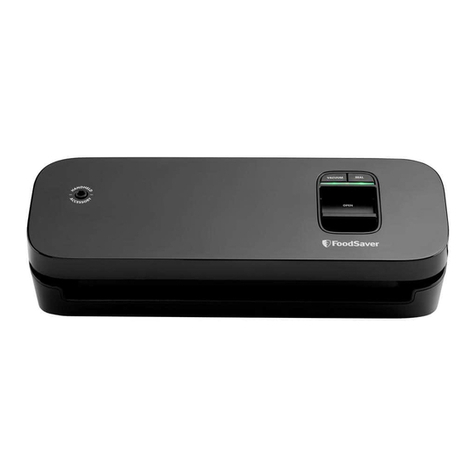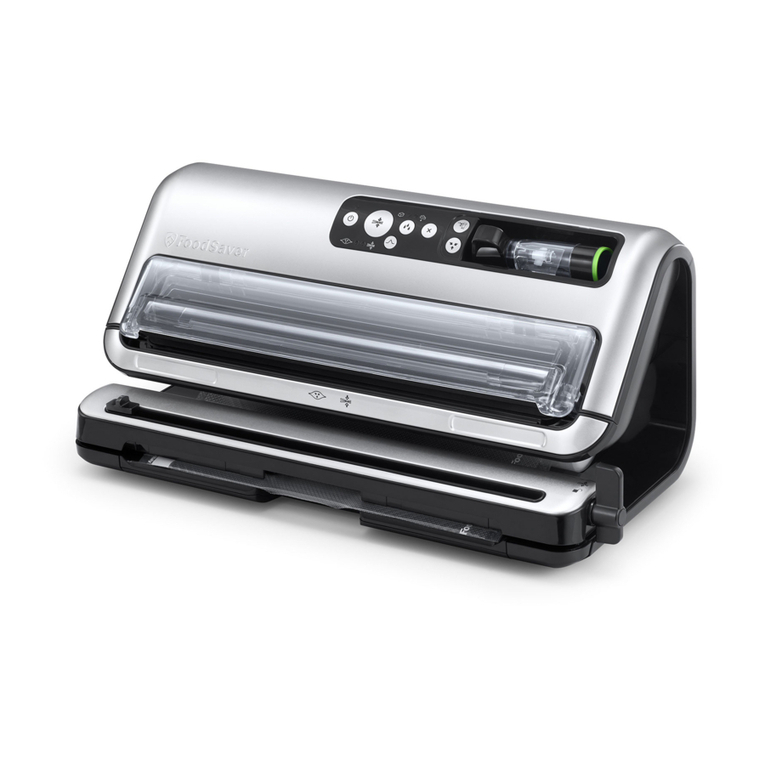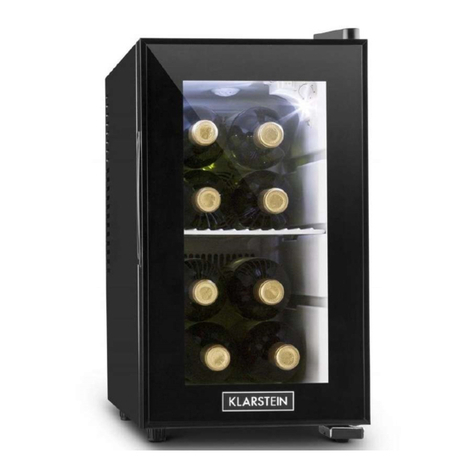Tips
Tips voor su esvol va umeren
Voor meer gebruikstips en veiligheidsinformatie, zie de meegeleverde FoodSaver“ handleiding.
Het sealen van een zak
Zorg ervoor dat het deksel van het apparaat goed gesloten is
en de zak op de juiste wijze geplaatst is.
Wanneer een zak gemaakt wordt van een rol,
zorg ervoor dat de openzijde van de te
maken zak op de seal strip(G) ligt, niet over
het rubber(H) of in de vacumeerkamer(E).
Voorkom dat vocht of vloeistof in de vacuümkamer wordt
gezogen of op de seal naad terechtkomt.
Dit kan door vochtige voedingswaren zoals
rauw vlees 1?2 uur voor te vriezen of een
opgevouwen keukenpapier in de zak te doen
om overtollig vocht te absorberen. Wel
minstens 7,5 cm ruimte laten tussen
keukenpapier en het einde van de zak, zodat
deze op de juiste wijze gesealed wordt met
het keukenpapier erin.
Lucht verwijderen uit een zak
Zorg ervoor dat het apparaat de tijd heeft om af te koelen.
Wacht minstens 20 seconden na elk
vacumeerproces. Bij overmatig gebruik
schakelt het apparaat automatisch uit, om
oververhitting te voorkomen. Indien dit
gebeurt, wacht dan minstens 20 minuten om
het apparaat af te laten koelen.
Zorg ervoor dat de zak op de juiste wijze geplaatst is.
Wanneer een zak gevacumeerd of gesealed
wordt, ervoor zorgen dat de openzijde van
de zak in de vacumkamer geplaatst is.
Controleer de zak op rimpels of plooien langs de seal strip
(G) voor het vacumeren.
Plooien in de gesealde naad kunnen lekkage
veroorzaken of weer lucht in de zak laten.
Controleer dus op plooien in de zak langs de
seal strip, alvorens het deksel te sluiten en het
vacumeerproces te starten. Mochten zich toch
plooien in de zak bevinden na het sealen, de
zak openknippen en opnieuw vacumeren en
Opbergtip
Het apparaat altijd opbergen met het slot (D) ontgrendeld.
85
4
Vacuum Packaging and Food Safety
The vacuum packaging process extends the
life of foods by removing most of the air
from the sealedcontainer, thereby reducing
oxidation, which affects nutritional value,
flavour and overall quality. Removing air can
also inhibit growth of microorganisms, which
can cause problems under certain conditions:
Mould — Easily identified by its fuzzy
characteristic. Mould cannot grow in a low
oxygen environment,therefore vacuum
packaging can slow the growth of mould.
Yeast — Results in fermentation, which can be
identifiedby smell and taste. Yeast needs
water, sugar and amoderate temperature to
grow. It can also survive withor without air.
Slowing the growth of yeast requires
refrigeration, while freezing stops it
completely.
Bacteria — Results in an unpleasant odour,
discolouration and/or soft or slimy texture.
Under the right conditions,C lo str idium bo tulinum
(the organism that causes Botulism) can grow
without air and
sometimes cannot be detected by smell or
taste. Although it is extremely rare, it can be
very dangerous.
To preserve foods safely, it is critical that you
maintainlow temperatures. You can
significantly reduce the growth of
microorganisms at temperatures of 4¡C or
below.Freezing at ?17¡C does not kill
microorganisms, but stops them from growing.
Forlong?term storage, always freeze perishable
foods thathave been vacuum packaged, and
keep refrigerated after thawing.
It is important to note that vacuum packaging
is NOT a substitute for canning and it cannot
reverse the dete rio ration of foods. It can only
slow down the changes in quality. It is difficult
to predict how long foods will retain their
top?quality flavour, appearance or texture
because it depends on age and condition of
the food on the day it was vacuumed
packaged.
MPORTANT: Vacuum packaging is NOT a substitute
for refrigeration or freezing. Any perishable foods
that require refrigeration must still be
refrigerated or frozen after vacuum
packaging.
Food Preparation and Reheating Tips
Thawing and Reheating Vacuum Packaged Foods
Always thaw foods in either a refrigerator or
microwave do not thaw perishable foods
at room temperature. Make sure to cut
corner of bag before placing it in microwave.
We recommended that you place bag on a
microwave?safe dish to avoid liquids from
spilling out.
To reheat foods in a microwave oven, make
sure to remove them from bag and place it
on a microwave?safe dish. DO NOT REHEAT
FOODS IN A MICROWAVE WITHOUT
REMOVING THEM FROM BAG. You can also
reheat foods in FoodSaver¤ Bags by placing
them in water at a low simmer below 75¡C
(170¡F).
Preparation Guidelines for Meat and Fish:
For best results, pre?freeze meat and fish for 1?
2 hoursbefore vacuum packaging in a
FoodSaver
TM Bag. This helpsretain the juice and
shape, and guarantees a better seal.
If it?s not possible to pre?freeze, place a folded
paper towel between meat or fish and top of
bag, but below seal area. Leave paper towel in
bag to absorb excess moisture and juices
during vacuum packaging process.
Note: Beef may appear darker after vacuum
packaging due to the removal of oxygen. This
is not an indication of spoilage.
Preparation Guidelines for Hard Cheeses:
To keep cheese fresh, vacuum package it after
each use. Make your FoodSaver
TM Bag extra
long, allowing 2.5 cm of bag material for each
time you plan to open and reseal in addition
to the 7.5 cm room younormally leave
between contents and seal. Simply cut sealed
edge and remove cheese. When you?re ready to
repackage the cheese, just drop it in bag and
reseal.
MPORTANT: Soft cheeses should never be
vacuum packaged.
Preparation Guidelines for Vegetables
Vegetables need to be blanched before vacuum
pack ag ing. This process stops the enzyme
action that could lead to loss of flavour, colour
and texture.
To blanch vegetables, place them in boiling
water or in the microwave until they are
cooked, but still crisp. Blanching times range
from 1 to 2 minutes for leafy greens and peas;
3 to 4 minutes for snap peas, sliced courgette
or broccoli; 5 minutes for carrots; and 7 to11
minutes for corn on the cob. After
blanching,immerse vegetables in cold water
to stop the cookingprocess. Finally, dry
vegetables on a towel before vacuum
packaging.
Note: All vegetables (including broccoli,
Brusselsprouts, cabbage, cauliflower, kale,
turnips) naturally emit gases during storage.
Therefore, after blanching, they must be
stored in freezer only.
Guidelines for Va uum Pa kaging


